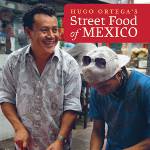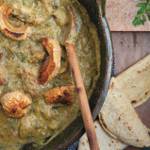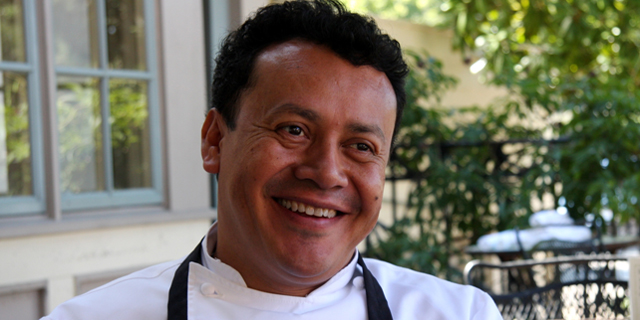Born in Mexico City, Hugo Ortega was oldest of eight children, and began working at the age of 15 to help support his family, selling homemade dulce de leche, aguas and food prepared by his aunt in the busy streets of Mexico. Determined to make a better life for himself, he left Mexico at the age of 17 and immigrated to Houston, Texas. When he found himself jobless and homeless, Tracy Vaught, owner of Backstreet Café found herself impressed with his eagerness to learn, positive attitude and work ethic, and offered him a position on the kitchen line at her restaurant, later offering to enroll Ortega in the Culinary Arts Program at Houston Community College. A true American story, Ortega became executive chef in 1995, and in a poetic twist, married Vaught!
In 2002, the duo opened Hugo’s restaurant serving authentic regional Mexican cuisine to celebrate the food of his homeland, his mother and his grandmother. Since its opening, Hugo’s has been lauded by local, regional and national media, including being name a “Top Table” by Bon Appétit, and one of the “Restaurants We Love” by Gourmet. This year, Ortega was named a finalist for the prestigious James Beard award.

In September, Hugo Ortega’s Street Food of Mexico, Ortega’s first cookbook, written with his brother, hit theshelves. Within, the color and flavor of Mexican street life comes alive as Hugo shares stories behind the more than 100 recipes featured in the book, photographed by award-winning photographer Penny de los Santos. TLK contributor Vianney Rodriguez caught up with Hugo Ortega to talk his new book, Mexican ingredients, and the importance of Mexico's culinary heritage.
Can you tell us about the experience of traveling throughout Mexico with your brother for the cookbook?
It felt like going home again, very comfortable and familiar, happy and exciting. I rediscovered some favorite foods from my childhood. It was a memory-filled and memory-making journey!
What do think this journey added to the cookbook?
It added the authenticity to the subject matter and that was key for us. This book is about celebrating the true, authentic, time-honored foods of my homeland, and while cooking and eating the dishes anywhere in the world is great, it is always best when experienced where it originated. Also, in a strange way, it helped us discover more of who we are and where we come from, both culturally and culinarily. Without taking the trip to Mexico for the book, we couldn’t have captured the fantastic photos of Penny de los Santos that bring the book to life.
What can readers expect from your first cookbook?
To discover interesting recipes and also to share a cultural experience!
Which region of Mexico most influences your cooking?
Puebla, it is where my family is from and has such amazing culinary history and diversity. But I cook food from all regions in the book and at Hugo’s.
Fresh vs. dried chiles — which do you prefer?
Each has their place. I don’t prefer one over the other. You cannot get the complex smoky earthy flavors without dried chiles, and you cannot get the zing in a ceviche without fresh chiles. Love them both!
Do you think the general American perception of Mexican food has changed? Do you think Americans have a better understanding of what a rich and complex cuisine it is?
It was recently recognized by UNESCO as a world cuisine. Yes, I believe there has been a heightened awareness of true Mexican cuisine in the past 7-10 years, and I am proud and honored to have been a part of that increase in awareness and understanding.
What’s your preference — the flour tortilla or the corn tortilla?
Depends on what I’m eating, and where I am in Mexico. Generally, corn is used in the south and flour is used in the northern, more arid region. I personally love them [both]. As for preference, the biggest thing is that I prefer handmade to store-bought for sure. There is a big difference. Handmade tortillas – both corn and flour – are a must.
What do you think is the most important thing for home cooks to understand about Mexican cuisine?
Many different cooking methods are used, even while cooking the same dish. Dry-toasting chiles and seeds, frying sauces, braising meats, and the use of many ingredients adds depth to sauces. Flavors are layered one on top of the other – it is essential to true Mexican cooking. There are also very simple salsas, grilled meats and ceviches, but it is a broad topic and one could devote their lifetime to understanding how each region cooks. That is the fun of it!
What essential ingredients should one stock in their pantry to successfully cook Mexican food?
White onions, garlic, jalapeños, serraños, tomatoes, cilantro, avocados, Mexican oregano, hominy, various dried chiles, corn husks, chipotle peppers, lard, rice, masa harina. . . .that’s a good start!
After a long day of working with food, what do you crave when you get home?
Peace and quiet, a game on TV, and a simple bowl of soup.
***
As a bonus, Ortega gave TLK a sneak peek at one of the recipes contained in Hugo Ortega's Street Food of Mexico, below. If one recipe just isn't enough, you can buy his book online. Just click here.
Chicharrón Stew (Guisado de Cazuela de Chicharrón)
- 10 medium tomatillos, husks removed, washed, roasted
- 1 large white onion, quartered, roasted
 6 garlic cloves, peeled, roasted
6 garlic cloves, peeled, roasted- 1 whole jalapeño pepper, roasted, stemmed
- ¼ cup olive oil
- 2 (4 ounce) packages chicharrónes
- 2½ cups beef stock
- 1 teaspoon dried Mexican oregano
- ¼ teaspoon ground cumin
- Pinch ground cloves
- ¼ cup pipicha leaves, optional
- 12 regular-sized tortillas, warm
- ½ small bunch cilantro, coarsely chopped for garnish
- ½ small white onion, finely chopped for garnish


![Making Mealtime Matter with La Familia: Easy Sofrito [Video]](https://thelatinkitchen.com/wp-content/uploads/2015/10/sofrito-shutterstock__0-500x383.jpg)
![Easy Latin Smoothies: Goji Berry Smoothie [Video]](https://thelatinkitchen.com/wp-content/uploads/2015/12/goji_berry-shutterstock_-500x383.jpg)
















![Fun and Fast Recipes: Fiesta Cabbage Salad [Video]](https://thelatinkitchen.com/wp-content/uploads/2015/11/fiesta_cabbage_slaw-shutterstock_-500x383.jpg)









